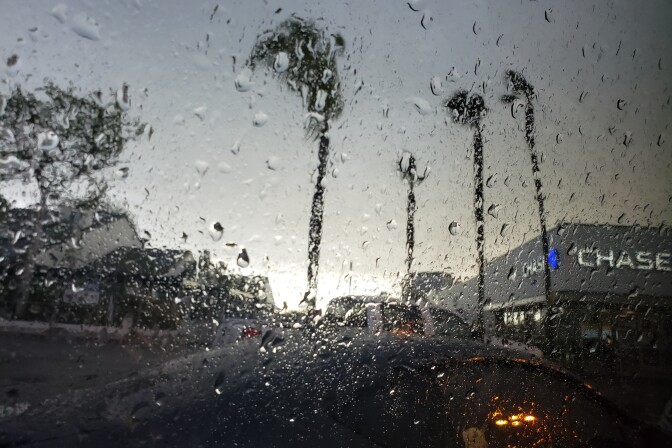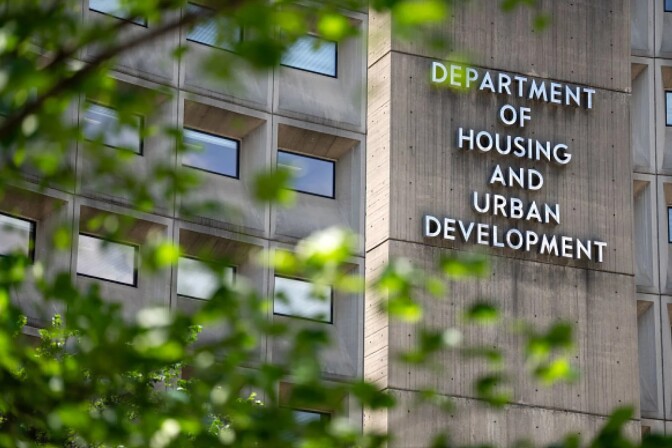America's new top health diplomat is Bethany Kozma.
The job she took on this week — leading the Department of Health and Human Services Office of Global Affairs — does not have a high profile. And Kozma herself is not a familiar name in the world of public health.
But it is a position with power — and Kozma has a record of public statements and activism on health issues, equating abortion with "murder" and campaigning against gender-affirming care.
The office sometimes is referred to as the "diplomatic voice" of HHS. As director, Kozma will have considerable influence over how the U.S. shapes health policy in other countries in the wake of the Trump administration's foreign aid cuts and withdrawal from the World Health Organization.
Kozma declined to be interviewed for this story. She doesn't appear to have a background in global health based on publicly available information online. The HHS website offers few details about her professional profile. In response to questions about her qualifications and vision for the role, HHS responded with this statement.
"The Office of Global Affairs (OGA) advances the Trump administration's agenda and priorities by bringing common sense, transparency and gold-standard science to global partners. Under Secretary Kennedy's leadership, OGA is committed to strengthening the United States' position as the global gold-standard for public health and ensuring Americans are protected at home and abroad."
Who is Bethany Kozma?
Kozma began her career in public service during the George W. Bush administration, working at the White House Homeland Security Council. During the Obama years, she re-entered public life as an activist.
In a 2016 commentary for The Daily Signal, a conservative news website founded by the Heritage Foundation, she argued against the Obama administration's guidance that public schools should allow children to use the bathroom that comports with their identity.
"This radical agenda of subjective 'gender fluidity' and unrestricted shower and bathroom access actually endangers all," she stated, noting that "predators" could abuse the policy.
In 2017, she joined the Trump administration as senior adviser for Gender Equality and Women's Empowerment in the United States Agency for International Development, eventually being promoted to deputy chief of staff. In videos obtained and released by ProPublica, Kozma recalls calling the U.S. a "pro-life" country in a closed-door U.N. meeting about women's rights in 2018, when access to abortion still was protected nationally by Roe v. Wade.
In August 2020, Sen. Chris Coons, D-Del., and four other Democratic senators issued a letter labeling Kozma and several other political appointees at USAID as "prejudiced" and called for them to be removed from their posts. Kozma has "spoken extensively and derisively of trans people and trans issues," the senators wrote.
During the Biden administration, she also was involved in Project 2025, the Heritage Foundation's "blueprint" for a new Republican administration. She played a prominent role in Project 2025 training videos, obtained and published by ProPublica.
In one nearly 50-minute training video focused on left-wing language, she called for a Republican administration to "eradicate 'climate change' references from absolutely everywhere," and said that concerns over climate change are efforts at "population control." She also called gender-affirming care "absolutely infuriating" and said "the idea that gender is fluid is evil." Overall, she argued that changing language around these policies should be a priority for political appointees.
Kozma joined the second Trump administration as a chief adviser at the HHS Office of Global Affairs. In September, she spoke at a U.N. event commemorating the 30th anniversary of the declaration that denying women's rights is a human rights violation.
"While many may celebrate so-called successes gained for women over the last 30 years, one must ask what defines true success for women?" she began, adding that "biological reality is rooted in scientific truth and is confirmed by the universal truths that we are endowed by our creator who made us 'male and female.'"
Those views can be divisive but have garnered some support for Kozma's promotion.
"Bethany is an excellent pick for global affairs at HHS," says Roger Servino, vice president of domestic policy at The Heritage Foundation. "She was an early champion of protecting children from gender ideology back when the medical establishment was able to silence voices of reason and dissent and she is perfectly placed to help push back on global health bodies trying to impose left wing pseudoscience on the American people and the world."
What will her goals be at the Office of Global Affairs?
Kozma is taking over as director of the HHS Office of Global Affairs at a time of drastic change for global health.
In previous administrations, a main focus of the office was dealing with the World Health Organization. Typically, the director, who usually has a background in public health, is involved in negotiations on sharing data for pathogen surveillance or developing vaccine policy, for example.
After President Trump withdrew the U.S. from WHO, the administration has started a new strategy: striking deals with individual countries to give health aid in exchange for their meeting certain policy prescriptions. Kozma has been involved in some of those negotiations, but the details aren't quite finalized.
Some reproductive rights advocates believe Kozma will use her new position to insert anti-abortion and anti-LGBTQ policies into these agreements.
"[Kozma] is vehemently anti-trans, anti-LGBTQI+, anti-abortion," says Keifer Buckingham, managing director at the Council on Global Equality, a coalition of advocacy organizations that focuses on LGBTQ issues. "For those of us who want to ensure that the provision of U.S. foreign assistance and health doesn't discriminate against people based on who they are, [Kozma's appointment] raises a lot of red flags."
One particular worry is about the Helms Amendment, a U.S. policy that prohibits foreign aid being used to fund abortion services.
"There's been speculation that there's an intention by the U.S. government to expand the Helms Amendment beyond abortion to include LGBTQ's as well," says Musoba Kitui, director of Ipas Africa Alliance, a non-profit that works to provide access to abortion and contraception. He's concerned that health groups that serve those populations could lose funding. That speculation is backed up by reporting from The Daily Signal that the administration is planning to prohibit U.S. aid funding for "gender ideology and diversity, equity and inclusion initiatives."
Given LGBTQ people are often at higher risk for diseases like HIV, such policies could make these communities even more vulnerable, says Kitui.
"We could see more marginalization, inequality, spikes of infection," he says. While many African governments signing these deals understand those dynamics, Kitui says they may still agree to more restrictive conditions as aid cuts have "starved health systems to a point of desperation."
Have information you want to share about ongoing changes at federal health and development agencies? Reach out to Jonathan Lambert via encrypted communications on Signal: @jonlambert.12










